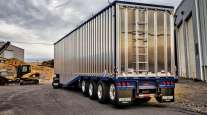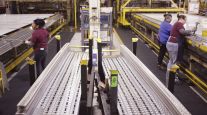Executives: Trailer Orders Down, but Robust 2018 Helped Companies Prepare for Future
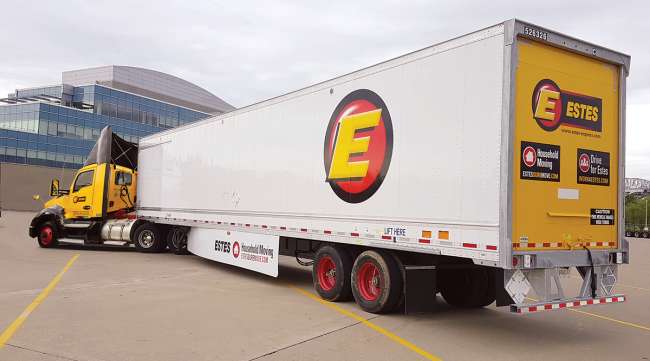
[Stay on top of transportation news: Get TTNews in your inbox.]
A downward trend in trailer orders this year is accompanying the softening freight environment in 2019, but also follows a banner year when motor carriers stocked up on equipment they think they’ll need to navigate the next several years, fleet and manufacturing executives said.
“In 2019, market volatility has played a role in the company’s reduction in new trailer acquisitions,” said Mike Palmer, vice president of fleet services at Estes Express, noting that the company invested heavily in trailers last year to both plan for future growth as well as “right size” its fleet.
The less-than-truckload carrier operates a fleet of about 29,000 trailers, with a trailer-to-tractor ratio of about 2.75 units to one tractor.
The company ordinarily replaces trailers after they’ve been in service for 15 to 20 years.
In July, preliminary net trailer orders fell to 9,900 units, the seventh consecutive year-over-year decline, according to ACT Research, citing preliminary data trailer makers will revise. That compared with 28,733 a year earlier, the best July on record. Research firm FTR pegged July’s preliminary net orders at 9,000.
Refrigerated trailers are still in high demand, as they have been for the past number of years.
David Gilliland, vice president of national accounts at Great Dane Trailers
“The economy still benefits from positive growth in the [Gross Domestic Product] and the impact of the tax cuts passed in 2017, so, business levels are still good,” Palmer said. “However, market volatility has caused us to examine our equipment needs more closely before additional purchasing.”
Lower-to-flat tonnage rates across the industry, particularly in the LTL market, and lower industrial output have exacerbated that volatility. Existing tariffs against foreign aluminum and steel imports, plus the Trump administration’s threats of expanding tariffs against Chinese-made imports, have created further unease.
“The aluminum tariffs allow the mills to increase their ‘conversion cost,’ which is the cost they charge us to convert a roll to our required sheet material,” said Ryan Rockafellow, vice president of sales and marketing at Heil Trailer and Polar Tank Trailer.
Dave Gilliland, vice president of national accounts at Great Dane Trailers, added that there’s no question tariffs on foreign steel and aluminum have impacted trailer builds and sales — regardless of where manufacturers get their supply. He noted that tariffs have also increased demand for domestic sources, he added.
David Giesen, vice president of sales for Stoughton Trailers, said his company assembled 16,000 trailers at its three plants in Wisconsin in 2018, a slight uptick over the previous year. “We have had challenges with component supply keeping up with the strong industry demand. A recent cooling in demand for trailers has eased the strain on the component supply side,” Giesen said.
Doug Kenney, director of national fleet sales for East Manufacturing Corporation, said his company saw a softening in order activity starting in April and expects a 20% decrease in its trailer build this year.
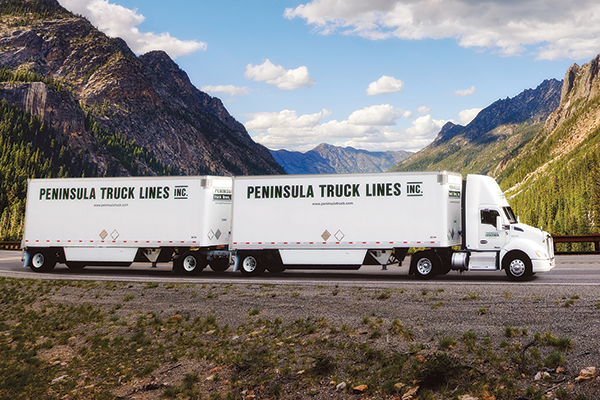
Peninsula Truck Lines President Brent Vander Pol said in 2020 and 2021, the company will focus on replacing its trucks. (Peninsula Truck Lines)
Peninsula Truck Lines is among the carriers scaling back on new trailer acquisitions this year, said Brent Vander Pol, president of the Federal Way, Wash.-based company. “We operate on a five-year budgeting process,” he said. “And in 2020 and 2021, we’ll be focusing our attention on replacing our trucks. Running new trucks is so important for our company’s success with driver recruitment and retention.”
Peninsula operates a fleet of 280 tractors and 1,000 trailers, primarily 28-foot triples, which the company can legally run in Idaho, Montana, Oregon and Washington. Over the past several years, Peninsula has replaced about 50 to 60 trailers annually and would prefer to run them upward of 15 years before replacing them, he said. However, chemical de-icers used on Pacific Northwest roads in the winter contribute to corrosion issues, which is affecting Peninsula’s replacement schedule. “Lately, we’ve found our replacement cycle is definitely faster now due to corrosion,” Vander Pol said. The company recently changed its trailer specifications by adding galvanized steel to the running gear to battle corrosion and improve longevity. “We’re hoping that change will help us get back to a longer replacement cycle,” he said.
Dustin Smith, senior vice president and group president of commercial trailer products for Wabash National, sees reason for optimism even as his company’s manufacturing volume has been lower in dry van sales and production.
“We’ve seen strength in 2019,” Smith said. With backlogs extended for several months into 2019, Wabash began accepting orders for the 2020 calendar year in late July and early August, he said.
“Even with the slightly lower volume in van trailers, we achieved record revenue in the second quarter of this year with growth led by our non-dry van businesses — final-mile products and diversified products [tanks and platform trailers],” Smith said. “Our biggest challenges in the last year were the raw material headwinds, supplier disruptions and labor challenges that hit us hard in the second half of 2018. We immediately took steps to course correct those challenges with supply chain strategies and pricing and, as a result, the first half of 2019 has been much improved.”
Great Dane’s Gilliland said his company anticipates a “solid year” for sales in 2020, especially in the refrigerated segment. “Refrigerated trailers are still in high demand, as they have been for the past number of years,” he said.
Craig Bennett, senior vice president of sales and marketing for Utility Trailer Manufacturing Co., noted that half of the 48,000 trailers the company built last year were equipped with reefers. He noted that the Food Safety and Modernization Act’s requirements for consistent cargo temperatures and greenhouse gas emission requirements in California have required reefer fleets to step up their new trailer acquisitions in recent years. “Utility has added capacity to meet this demand and is building a record number of trailers,” Bennett said.
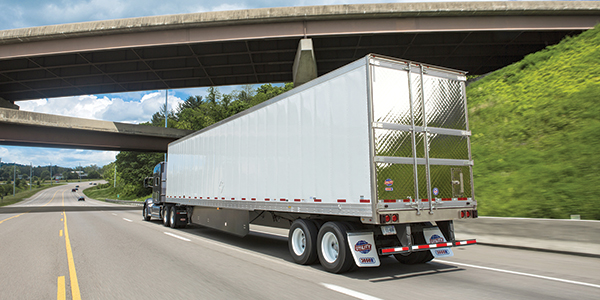
Half of the 48,000 trailers Utility Trailer Manufacturing Co. built last year were equipped with reefers, according to Senior Vice President of Sales and Martketing Craig Bennett. (Utility Trailer Manufacturing Co.)
Steve Burns, president of Strick Trailers, said he believes his company’s annual production of about 6,200 trailers remains largely unchanged from last year due to a focus on providing customers customized solutions.
At Birmingham, Ala.-based Buddy Moore Trucking, CFO Susan Kirkpatrick said the company will take a wait-and-see approach for any future equipment acquisitions, keeping a close eye on freight volumes, economic outlooks and in particular, the resale values of its trailers. BMT also is leasing some late-model trailers with the option to purchase them at the end of a 48-month lease, she added.
Sixteen months ago, BMT acquired the trucking division of Industrial Warehouse Services, obtaining the company’s fleet of 165 trucks and its drivers. With that acquisition, BMT took on a fleet of more than 750 older dry van and refrigerated trailers, many of which had to be replaced. So, earlier this year, the company purchased 100 new 53-foot trailers with the intent of replacing two older units with each new one.
“If there’s one thing I have learned through this whole process is that there’s a fine line between being short on trailers and having too many,” Kirkpatrick said. “Last year was an exceptional business year in this industry — one like we’ve never seen before,” she said. “We started this year with great, great optimism. But now we’re really beginning to batten down the hatches. And we’ve done some of these trailer purchases to put newer equipment in place to reduce maintenance costs while taking the opportunity to downsize our trailer fleet.”
Transport Topics Staff Reporter Roger Gilroy contributed to this report.



